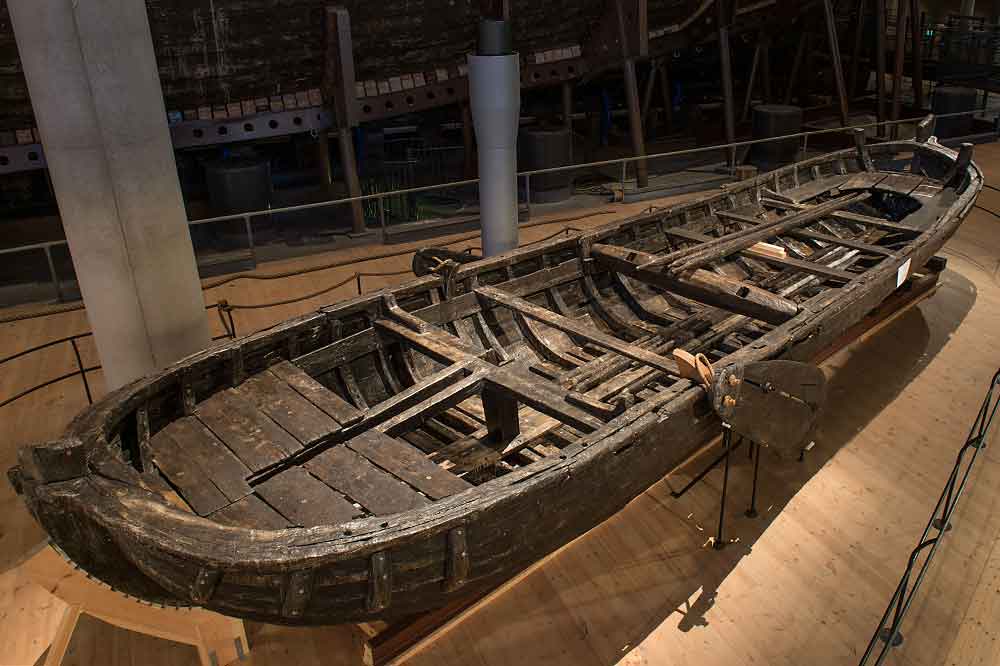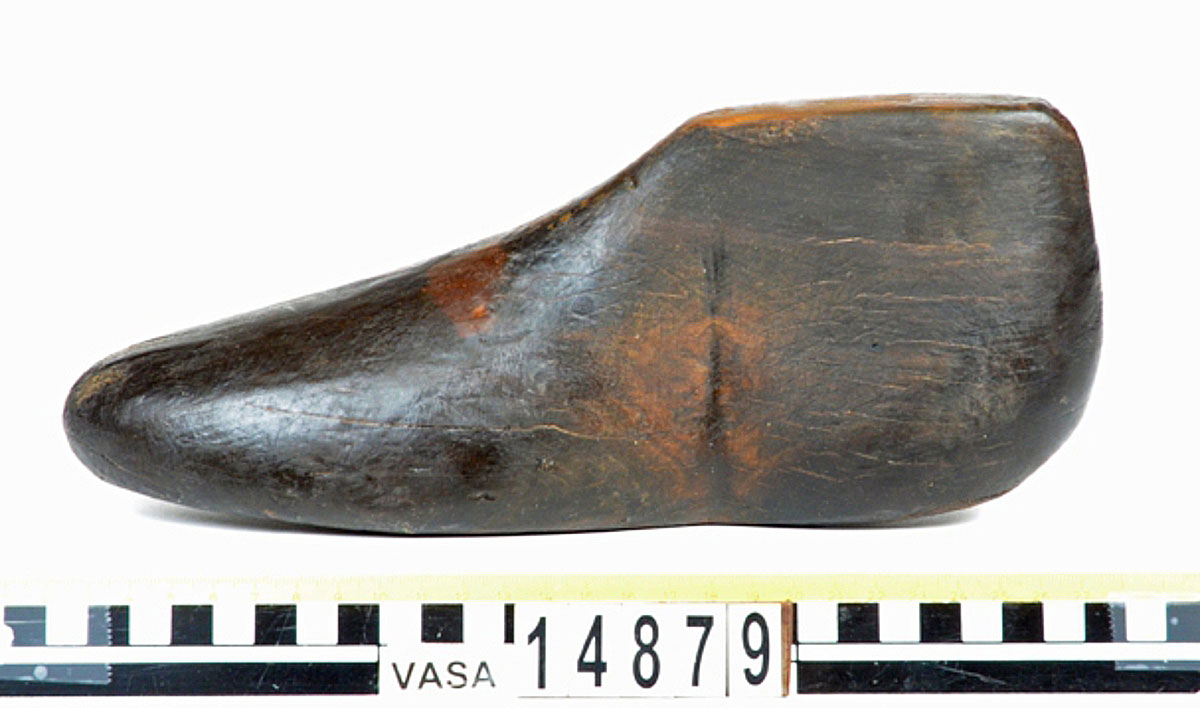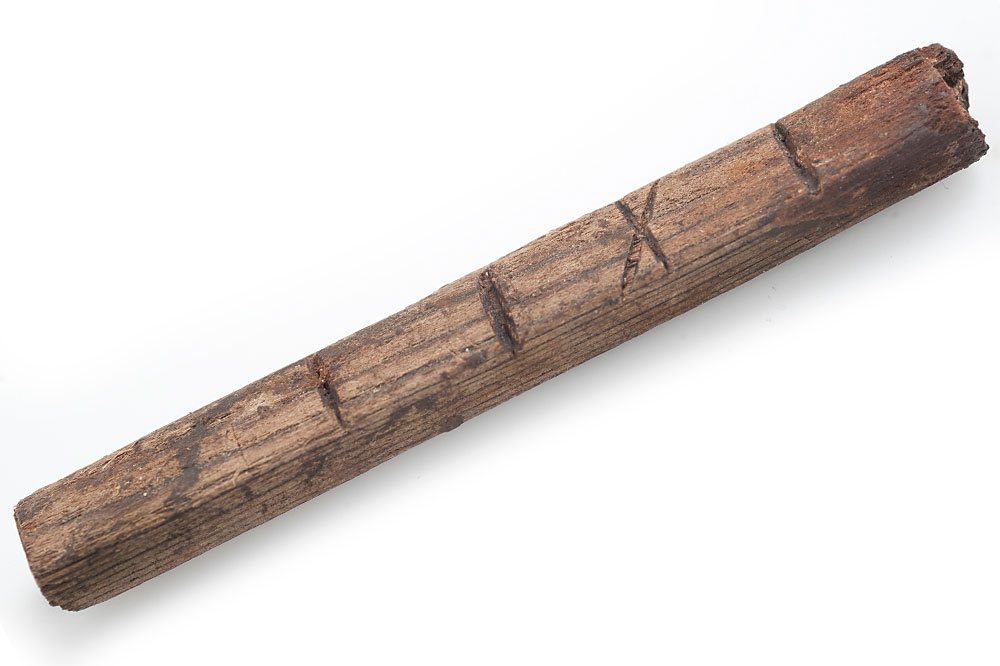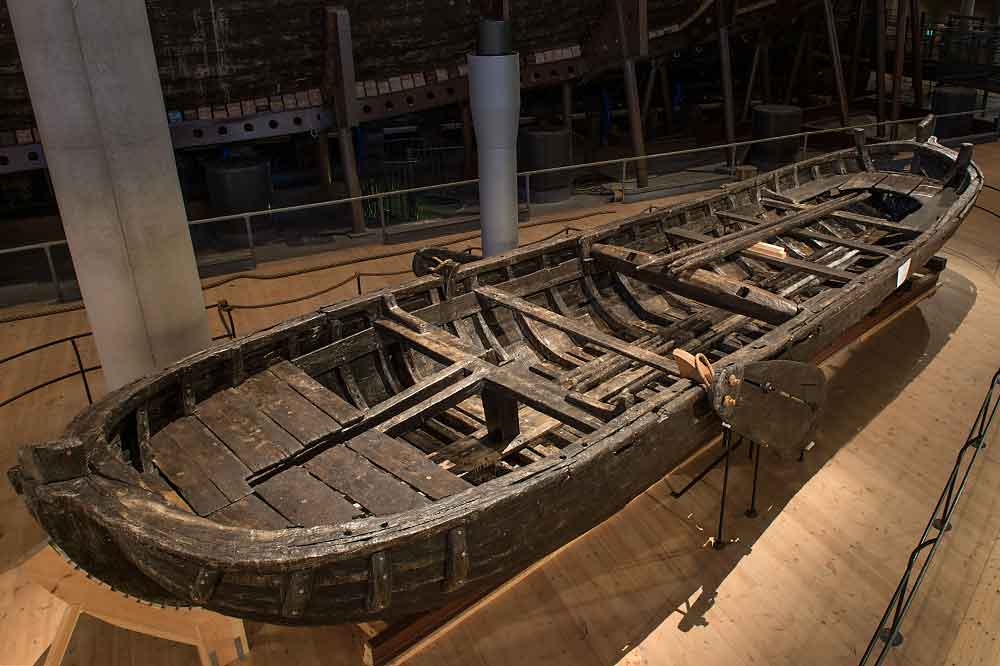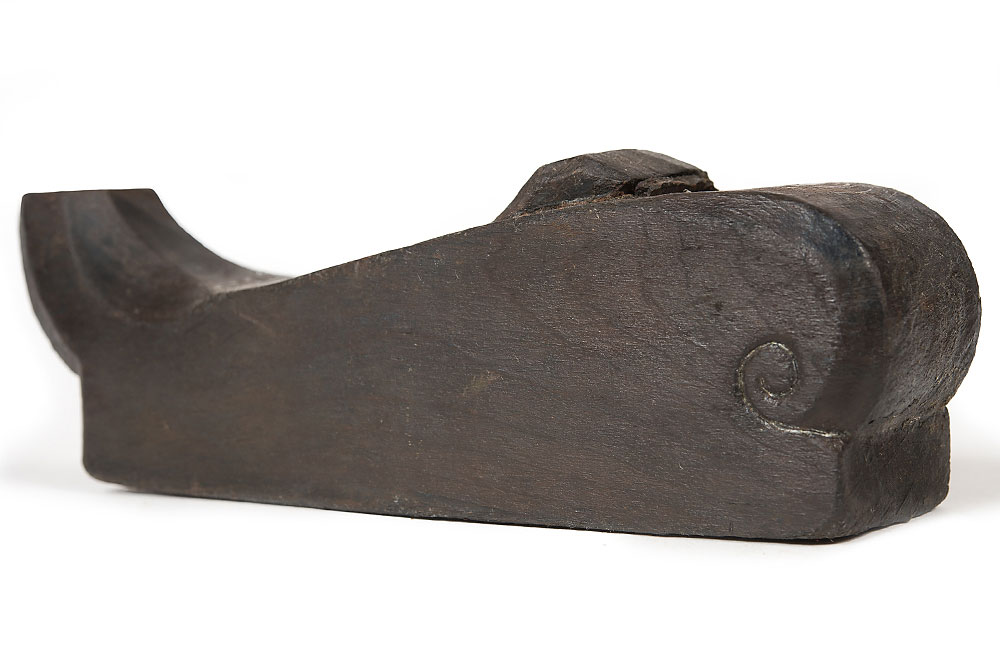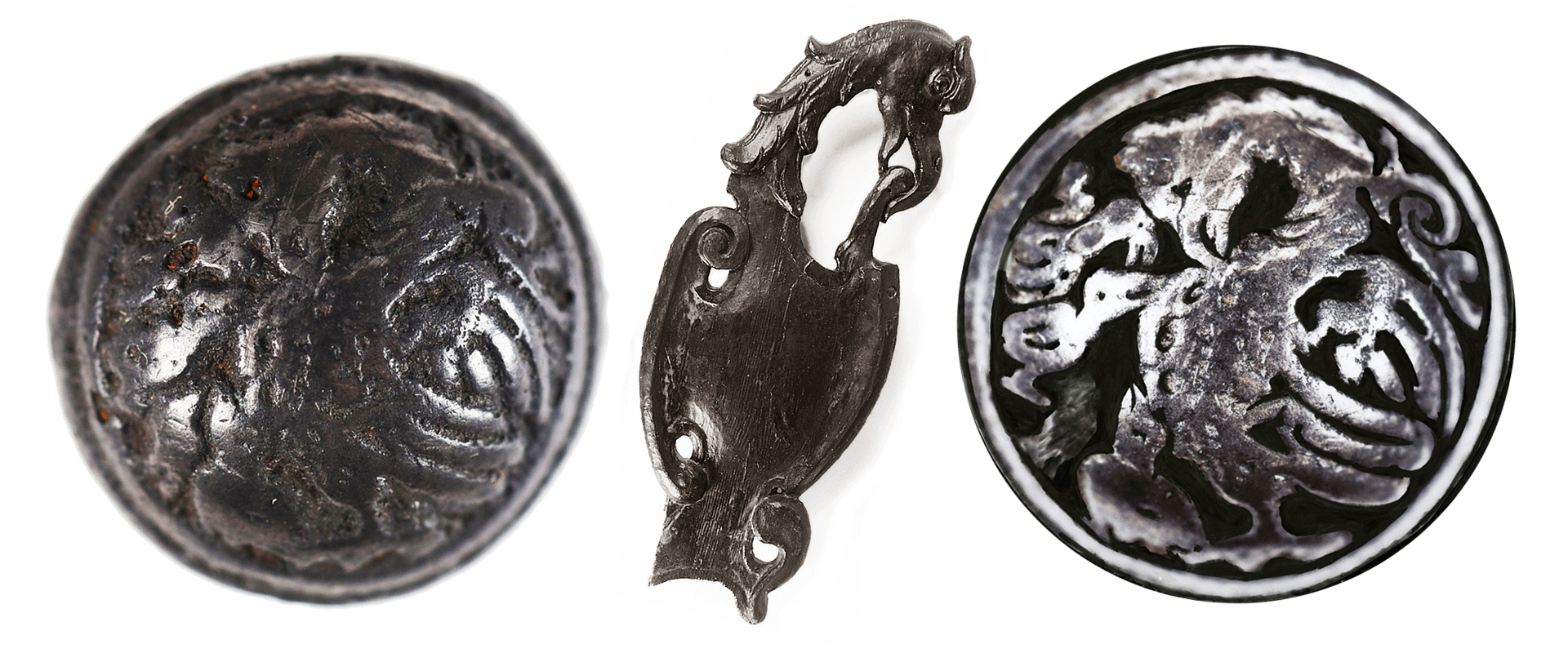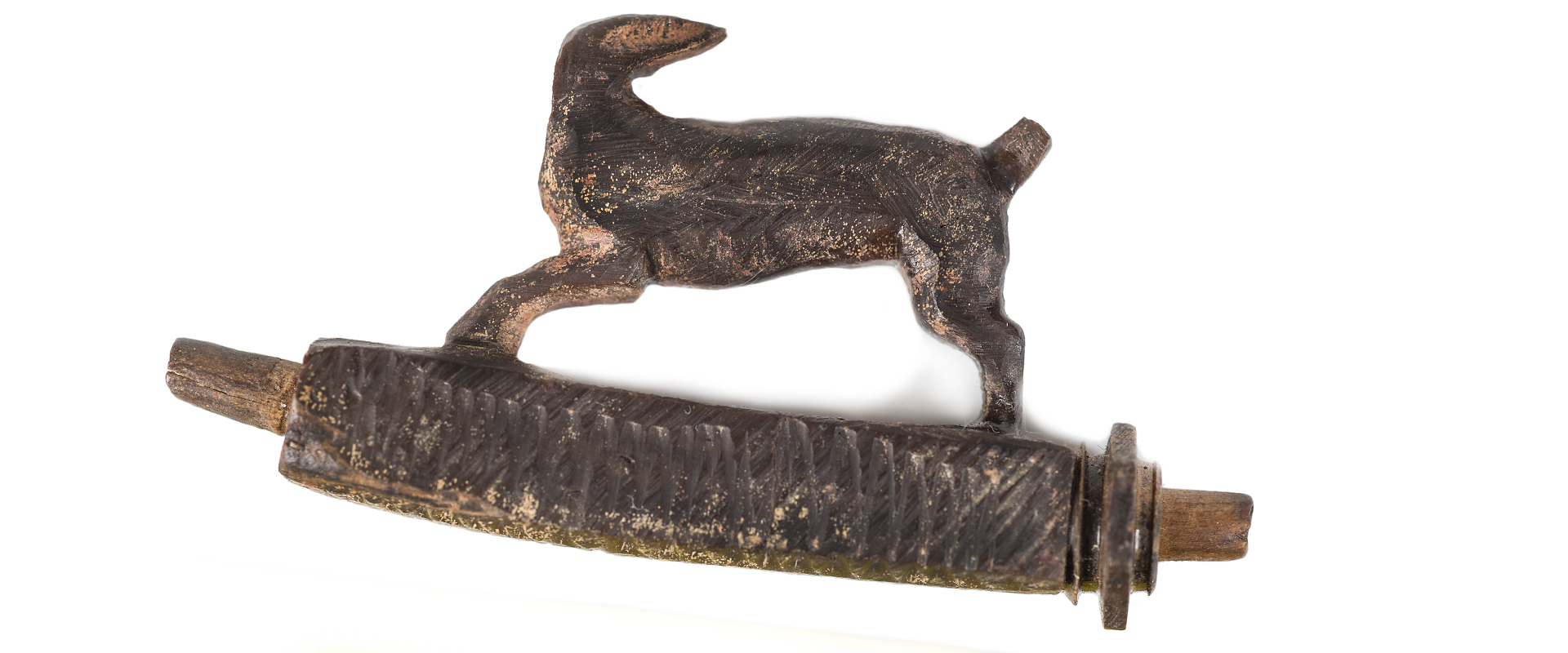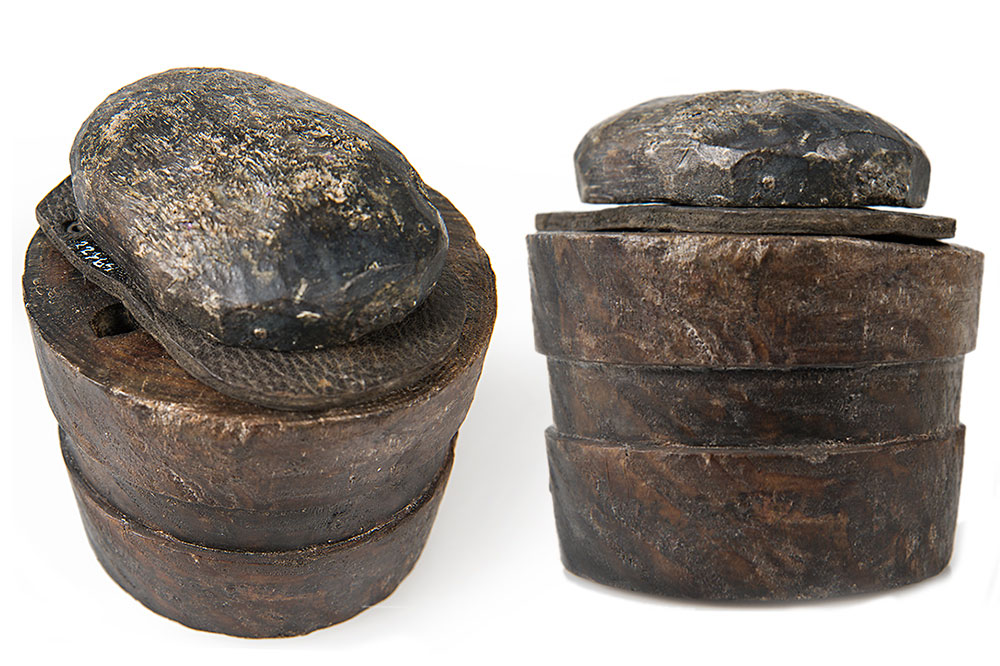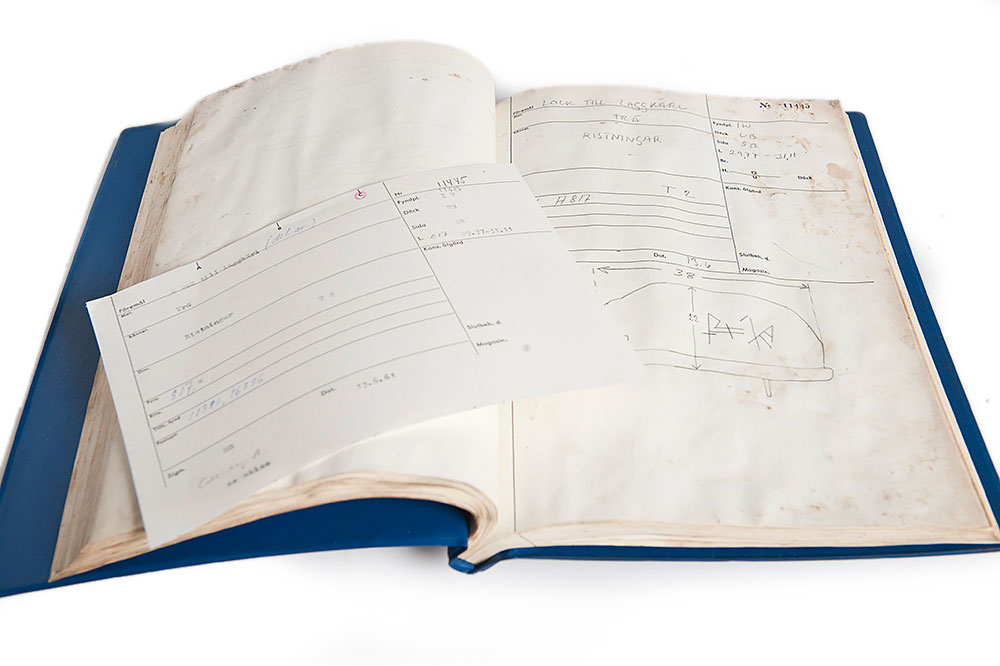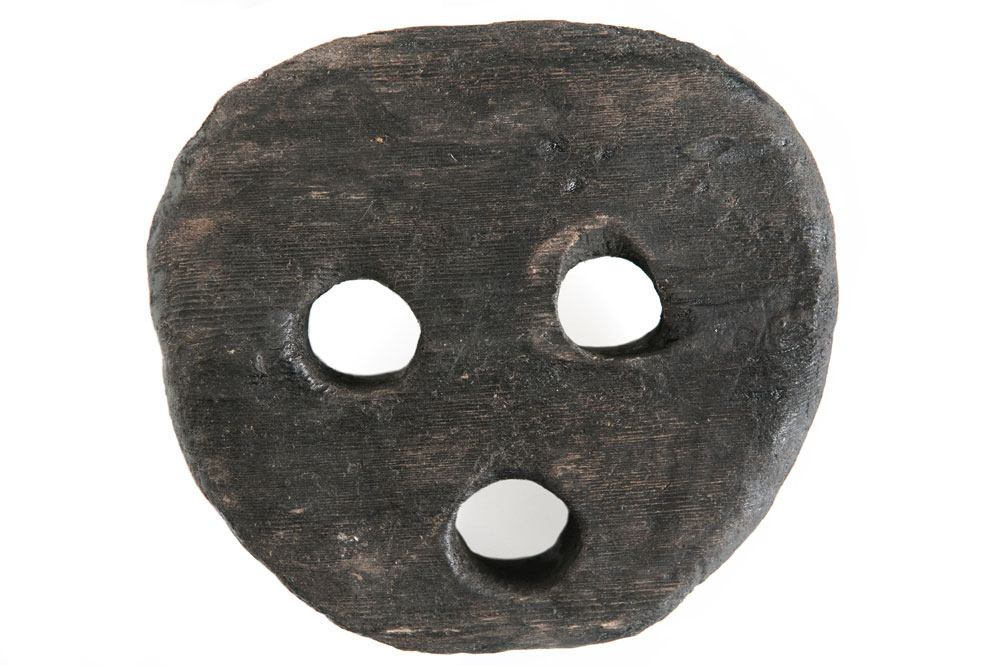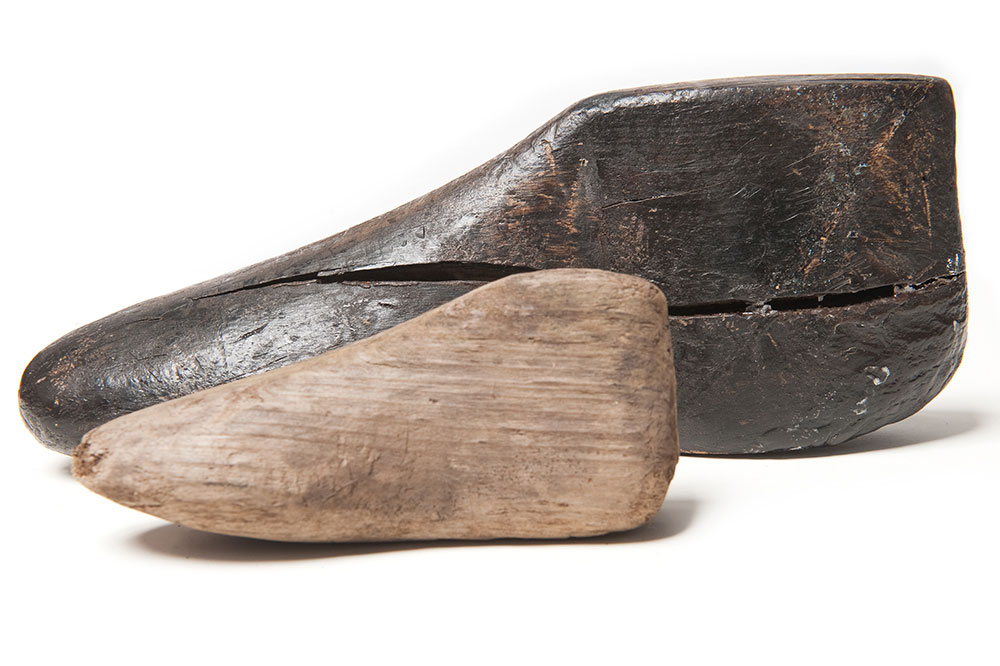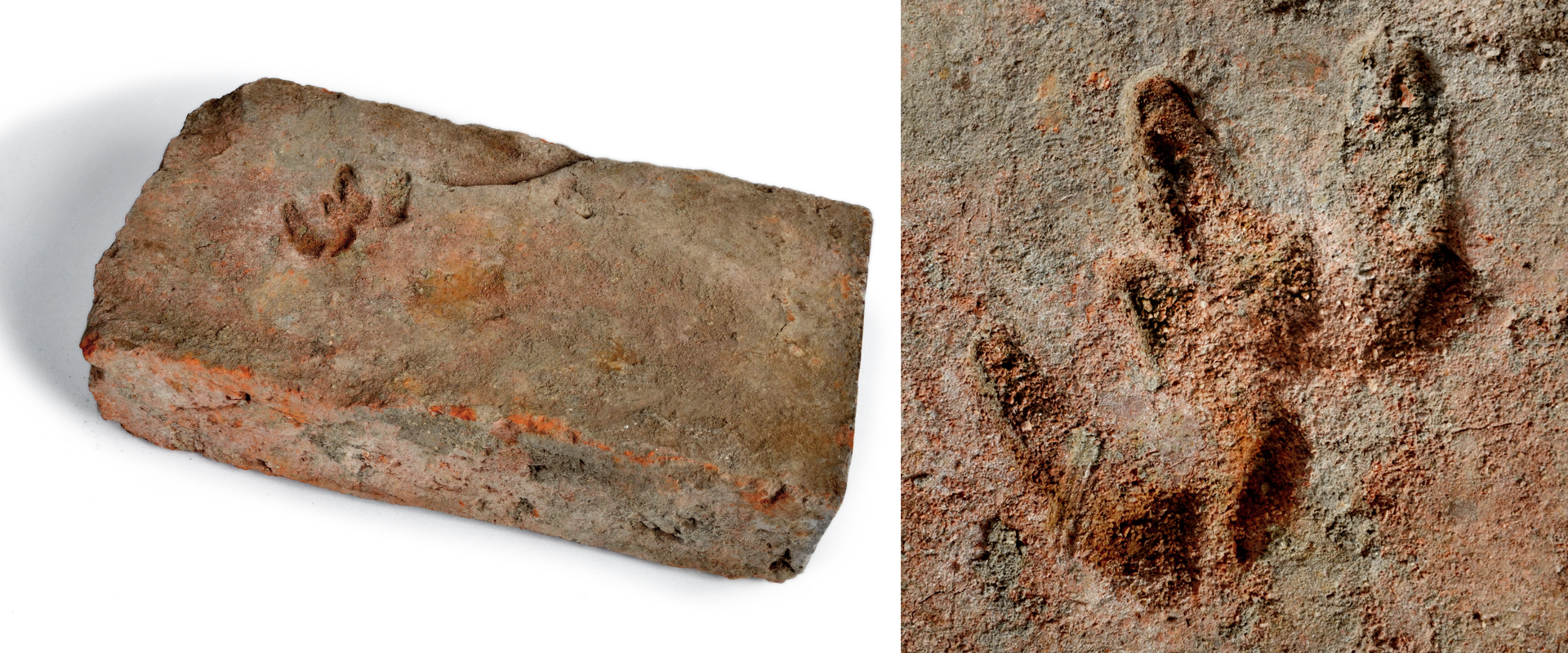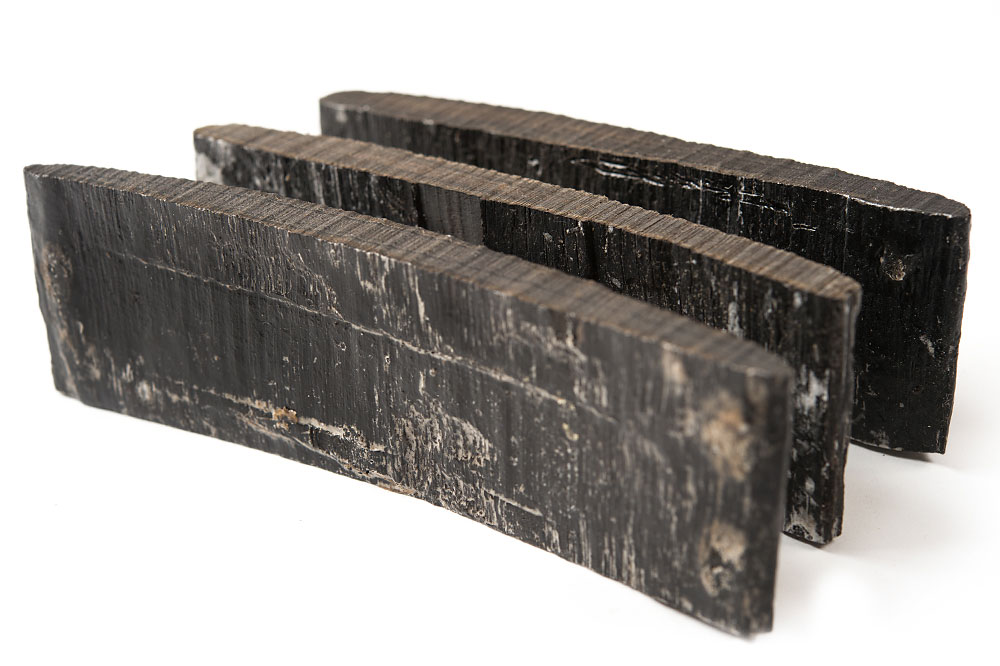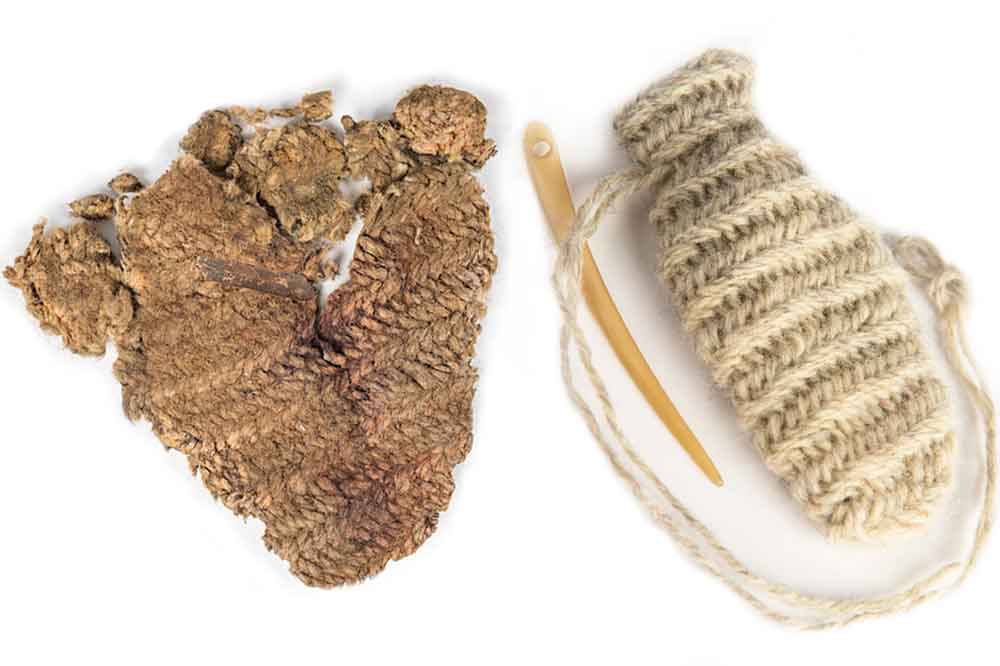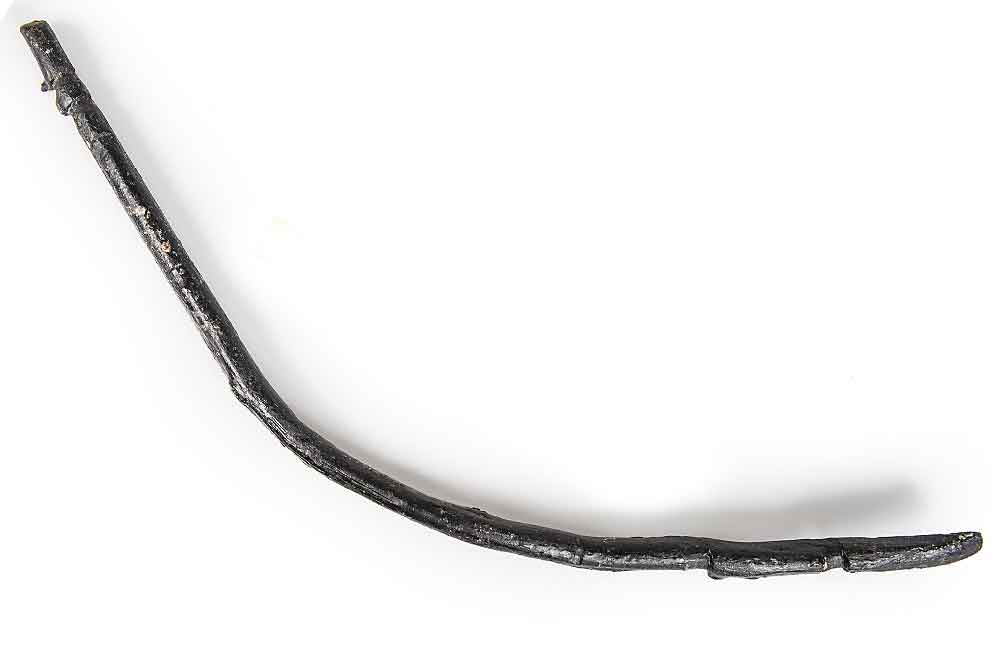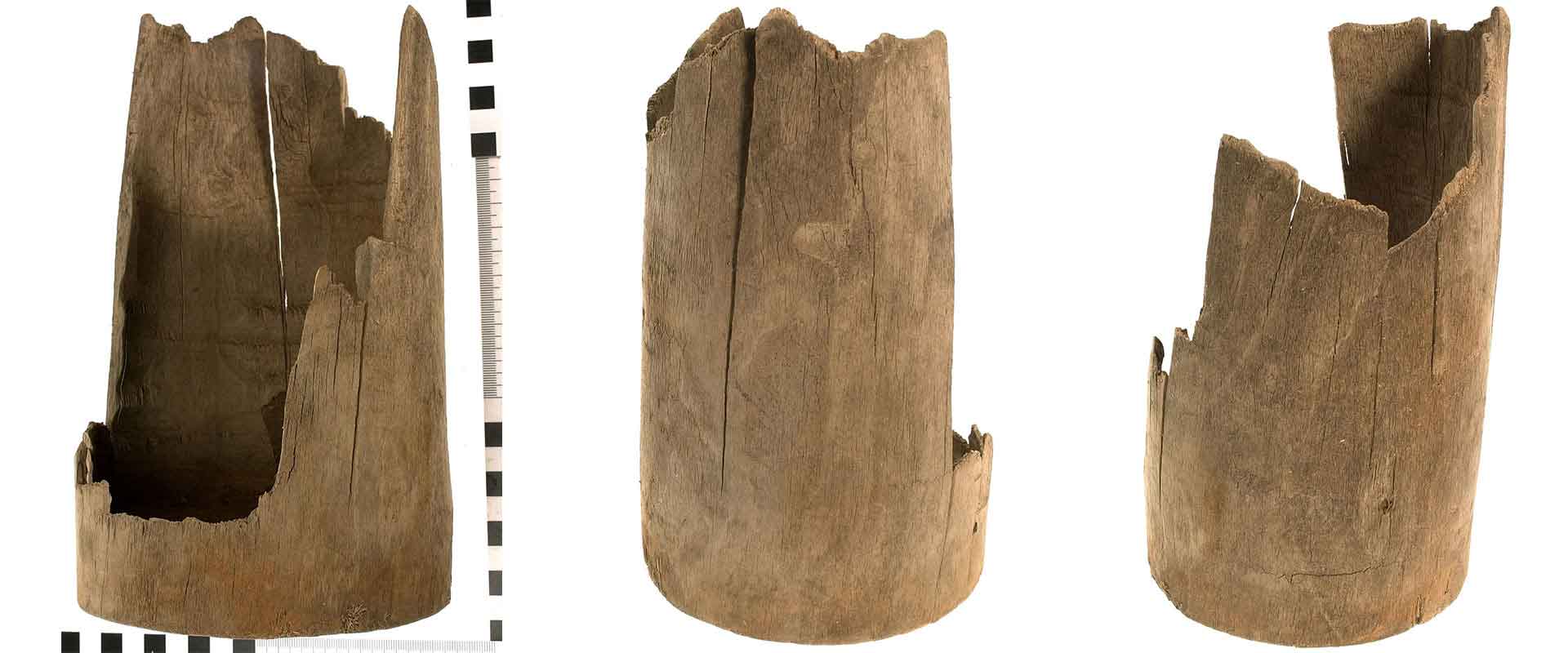The last find raised from the Vasa wreck site in 1967 was the ship's longboat or Espingen as it was also called. Learn all about its construction and use.
The last find raised from the Vasa wreck site in 1967 was the ship's longboat or Espingen as it was also called. Esping was the name used in the 17th century for a large ship's rowed and sailed service boat.
The esping was found close under Vasa's port side, which did not by itself mean that it belonged to the ship, but during the excavation of the interior of the ship, two leeboards and a windlass that fitted the boat were found on the lower gun deck. On the basis of these finds there was no doubt that the esping was associated with Vasa. Vasa's esping was recovered largely intact and shortly thereafter diving work on the site ceased.
The esping is nearly complete and no significant parts of the construction are missing. Certain parts of the boat were found detached, lying in and around the main structure, and could be replaced after being raised. The boat is in generally good condition but no longer has its original form. A break in the inwale and port side planking that occurred during the raising has allowed the bow to droop 15-20 cm, and the sides have bulged outward as the boat has been displayed without side supports. The boat is now about 7 cm wider than originally.
Technical description
The esping is 11.7 meters long, 3.20 meters extreme beam, 1 meter high amidships and currently weighs approximately 4 tons. Contemporary written sources indicate that "espings were often built as long as the parent ship was wide". This is more or less true in this case – Vasa is 11.3 meters in beam.
The hull is built of oak, including treenails. The deck planks, thwarts and windlass are of pine. Nails and bolts were of wrought iron.
There is no keel, but partial false keels at both ends to protect against abrasion. The bottom is made of four straight, broad planks. The sides are made of six full-length clinker strakes, plus stealers at each end. The clinker strakes are primarily fastened with Nordic-style rivets, although there are some double-clenched nails as well. Two heavy beams rest on a light clamp and are reinforced by standing knees. There is a small fixed deck at the bow, and fixed seats at the stern, with five loose thwarts in between. The hull form is double-ended, with full, rounded ends, and there is no transom or counter. Both the stem and sternpost are curved. There are thole pins for eight pairs of oars.
There was a single mast near the bow, although the mast itself has not been identified. When sailing, leeboards were hung on railing-mounted hooks to resist leeway. A heavy but removable windlass could be mounted amidships. The conceptual tradition behind the construction, a heavy flat bottom with clinker sides, is typical of the Low Countries.
How were the boats used?
Ship's boats had a variety of functions and thus many requirements. Because ships lacked mechanical propulsion and often lay at anchor, the boats had to handle a wide range of tasks.
In calms or restricted passages it was necessary to tow, kedge or warp the ship and boats had to have enough oar power to make this practical. Several boats could be used simultaneously to tow the ship, and this method was often used in cases of pursuit or strong currents. In open or deep water, where the ship could not be kedged, towing was the only option. In kedging, the boat was used to carry a small anchor some distance out from the ship and cast it. The ship would then use its capstan to draw itself up to the anchor, and the process was repeated as necessary. Kedging was used in shallow water, when the wind failed or to navigate narrow passages, and was exhausting for the crew. Warping is similar to kedging, except that a hawser is carried to a fixed point on shore. It was preferable if possible to kedging, as only the cable needed to be carried.
It was necessary to take on board supplies, such as water, victuals, powder and shot, and if the ship could not lie alongside a quay or wharf, these supplies had to be brought out by boat. It might also be necessary to transfer supplies from one ship to another in a seaway or roadstead.
Boats were used for communication, transferring people and messages to other ships or ashore.
In battle, small craft in the fleet had specific tasks. They brought replacement crew to ships that had suffered heavy casualties, or carried the crew of damaged ships to safety. If an enemy ship was immobilised by damage to the masts, sails or rudder, boarding parties could be sent in boats to capture the ship.
Ship's boats had to be able to handle heavy weather, as it was not always possible to wait in sheltered water for provisioning or other tasks.
Location
It has been discussed whether Vasa's esping was towed behind the ship or carried on deck, and where it was when the ship sank. We currently believe that the esping was normally towed, as it was too large and unwieldy to have been brought on board.
According to historical sources and contemporary depictions, the most common means of transporting ships' boats at the beginning of the 17th century was to tow them. Ships' boats were at that time quite large and thus impractical to take on board. Towing allowed the use of such large boats and allowed them to be put to use without complicated manoeuvres. The disadvantage of towing was the increased risk of loss or damage in storm or battle. After an English expedition in the Bay of Biscay lost all of its boats in a gale in 1625, it became more common to avoid towing and to take them on board, at least in the Royal Navy.
Bad weather seems to have been the only reason to keep boats on deck. Although heavy weather provided a good reason to keep boats on deck, they were exposed to wear and got in the way. It was also a complicated process to get them on board or over the side, especially with the typically large boats of the period.
When Vasa cast off bound for Älvsnabben it was a beautiful day with a weak south westerly wind, hardly bad weather. Vasa left the quay in the afternoon and it was probably planned to be in Vaxholm by the evening, where they would spend the night. In these conditions, the esping might have been needed in the water. It is very possible that the boat would also have been needed to tow the ship through some of the narrow passages on the route to Älvsnabben. In some cases, it was necessary to tow large ships the entire way from Stockholm to Älvsnabben.
One argument in favour of the boat having been on deck is that key items of equipment, the leeboards and windlass, were not mounted and thus the boat was not fully operational. But this equipment was not needed if the boat was to be used for towing or warping, in fact they would be in the way, and it was not needed if the boat was simply being towed.
It was also restrictive to have the boat on deck. It will just fit between the main mast and the weather deck capstan, but effectively blocks traffic across the deck and makes it nearly impossible to use the capstan. The capstan is needed for setting the foretopsail and course, both of which were set when Vasa sank.
On the basis of the relative find positions of the ship and esping, it seems most likely that the esping was being towed alongside, on the port lee side, rather than astern. It was more common to tow ship's boats astern so that they were out of the way, but in harbour or the archipelago, towing alongside was also used.
Today the esping is located on the ground floor, just beside Vasa.
